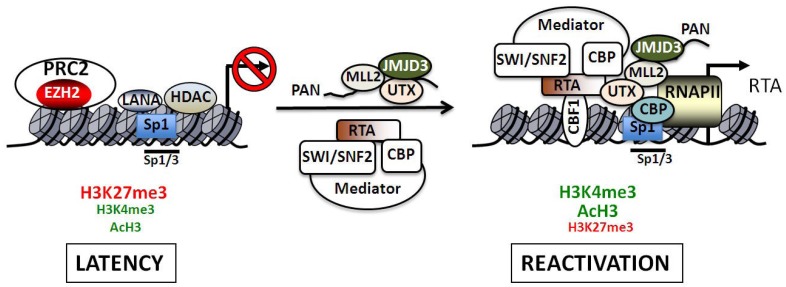Figure 4.
Regulation of the RTA promoter during latency and reactivation. The H3K27me3 histone methyltransferase complex PRC2 as well as specific histone deacetylases (HDAC1, 5 and 7) are critical transcriptional repressors that are present on the RTA promoter during latency. The bivalent chromatin of the RTA promoter is indicated by the presence of both activating (H3K4me3 and acH3) and repressive (H3K27me3) histone marks. After reactivation RTA binds to its own promoter via CBF-1 (also called RBP-Jκ) and recruits several cellular transcription factors such as the Mediator, the ATP-dependent chromatin remodeling complex SWI/SNF2 and the histone acetyltransferase CBP. The induction of transcription is accompanied by the rapid recruitment of RNA polymerase II (RNAPII) and increased binding of Sp1 to the promoter. The KSHV non-coding PAN RNA can also interact with the RTA promoter and recruit the H3K4me3 histone methyltransferase MLL2 as well as the H3K27me3 histone demthylases UTX and JMJD3. The Sp1/3-binding sites play an important role in the HDAC inhibitor-mediated reactivation of the RTA promoter. While these sites contribute to the LANA-mediated repression of the RTA promoter during latency, they are also involved in recruitment of CBP, which can catalyze the hyperacetylation of histones on the viral promoter during reactivation.

